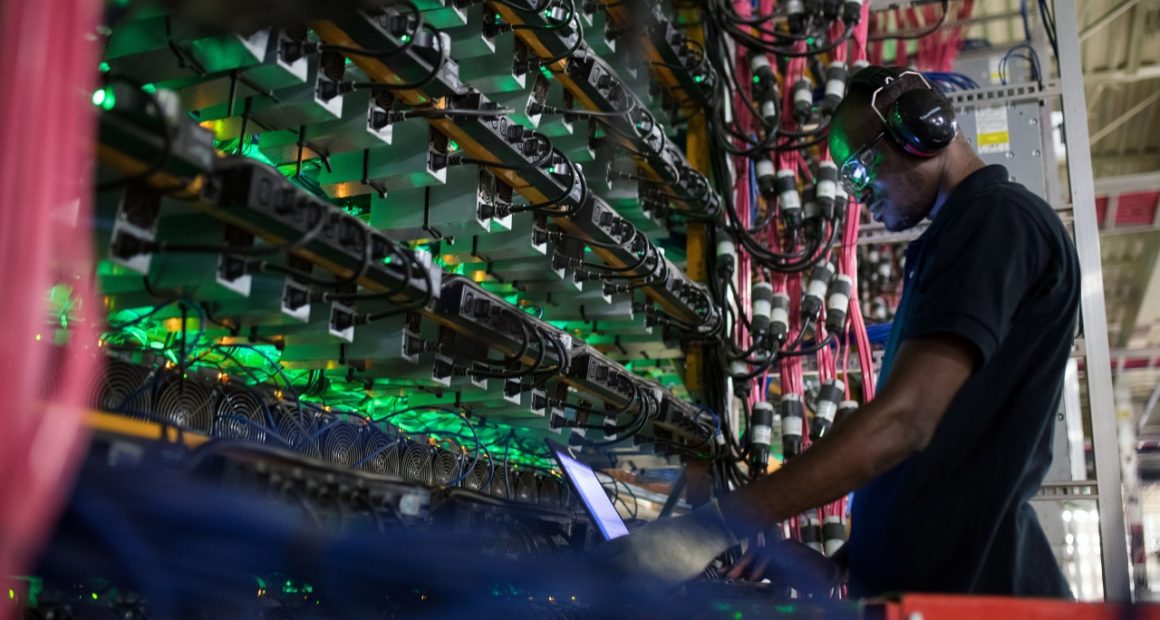Over the past couple of months, there have been several headlines scrutinizing the Bitcoin for its resource-heavy mining process. Examples of headlines have ranged from, ‘Bitcoin as big oil: the next big environmental fight?’ and have even gone to, ‘Bitcoin’s energy consumption ‘equals that of Switzerland”.
The truth of the matter is, although Bitcoins are not harvested from mother nature herself. Trying to convict bitcoin miners of committing environmental homicide is a bit of an over-kill.
To understand why it is so, it is helpful to have a baseline knowledge of how bitcoin is mined. Basically, a specialized computer that unironically is called a miner, is connected to the bitcoin network. It then receives unconfirmed Bitcoin transactions. For the transactions to be confirmed, the miner solves a tough computational problem.
By solving the problem, it allows the miner to chain together blocks of transactions and appear as confirmed in the blockchain. These problems are so hard to solve, it can be compared to the physical labor of real-life mining, but demand electricity rather than manpower.
It is important to be aware that the problems are intentionally hard to solve, as they are used to secure the blockchain. Had it been computationally cheap to solve the problems and add new blocks, the security-model would be broken.
To sum it up, these miners need electricity to run. This is where problems arise.
China, Mining Paradise
In total, Bitcoin mining uses approximately 0.1-0.3% of all global electricity annually. Insert Green Peace protesters screaming in the background.
Low-energy cost is one of several factors that are taken into account when deciding where a mining farm should be. That is why 70% of the world’s Bitcoins are being mined in China. Where according to Reuters, 12% of the wind power they produced went unused in 2017. This means that they have a surplus of renewable energy they want to get rid of and are willing to sell it for a cheaper price.
They also have to consider cool climate, favorable regulatory environments and to some degree fast internet connections.
Most mining facilities are located in remote areas of China. The region Sichuan, for one, has heavy rain seasons. This can create a surplus of hydro-electricity. As a result, the prices for electricity become amongst the lowest in the world, becoming a Bitcoin goldmine. In a study by Coinshares Research, they wrote that 74.1% of Bitcoin is being powered by renewable energy.
Cold places like Canada, Quebec, and Iceland are also desirable locations for Bitcoin mining, due to these reasons.
We found profit in a hopeless place
In the CoinShares Research mentioned above, they also concluded that, with the amount of renewable energy consumed in Bitcoin it, ‘could help turn loss-making renewables projects profitable and in time—as the industry matures and settles as permanent in the public eye—could act as a driver of new renewables developments in locations that were previously uneconomical.’
They will continuously reduce the need for electricity as it is an economic and technological incentive to slow down the need for electricity. There is also an opportunity to recover heat from these electronic devices.
For example, it is possible to reheat homes, dry wood or even implementing the extra heat into bigger productions that require heat.
This industry has also been very good at limiting electricity demand with rapid improvements in the energy efficiency of computing and data transmission networks.
But why?
There is no other way of creating Bitcoins. Although for some this seems meaningless, and not sustainable it allows for a network to create a peer-to-peer transactional system. This system can create a vast range of positive benefits for society.
This includes being able to transfer money to other countries that have a fraudulent banking system or an unstable currency. It can also help the millions of people who currently do not have access to bank accounts.
Story of the internet reiterated
Comparing Bitcoin to the internet is nothing new. Cryptographers do it all the time to reassure skeptics. Now even in energy use the headlines bare similarities, “[…]half of the electric grid will be powering the digital-Internet economy within the next decade”, was a headline for a Forbes article in 1999.
In an article published by the IEA, Mr. Kamiya wrote, “Since then, researchers have collected real-world data and developed and also refined methodologies to establish rigorous estimates of the energy use of data centers.
The global ICT sector, including by the IEA. The dire predictions about the energy use of the internet failed to materialize. Despite exponential growth in internet services. Largely because of rapid improvements in the energy efficiency of computing and data transmission networks.“
There are of course some obstacles to this system. The hardware for one has to get swapped for quicker, more energy-efficient gear. Yet, it would be unfair to categorize Bitcoin mining, as the industry that will tip the temperature to 2.0 degrees. Bitcoins promotes technological and greener innovations to take form. The future is green and the future is Bitcoin.





